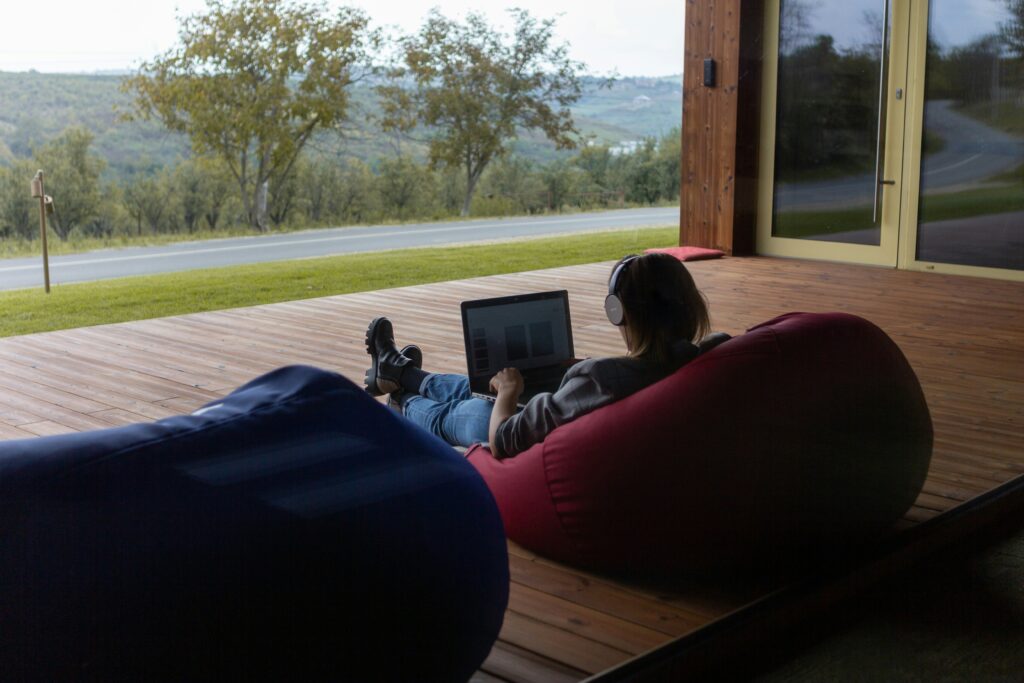Creating a comfortable home environment goes beyond basic furniture and decor. It’s about designing spaces that help you truly unwind, recharge, and feel at peace. By incorporating specific elements and thoughtful touches, you can transform your living space into the ultimate comfort zone.

Post Contents
Sink Into Microsuede Bean Bags
Modern microsuede bean bags offer exceptional comfort while adding a touch of casual luxury to any room. These oversized cushions conform to your body, providing support exactly where needed. Position them in corners or reading nooks to create instant relaxation spots. When selecting a bean bag, look for:
- Double-stitched seams and quality microsuede fabric for durability
- Fill made from high-density foam beads that maintain shape over time
- Size appropriate for your space – allow at least 2 feet of clearance around it
Lighting That Soothes
Strategic lighting dramatically impacts comfort levels. Install dimmer switches to adjust brightness throughout the day. Layer your lighting with floor lamps, table lamps, and wall sconces to create depth and eliminate harsh shadows. Warm-toned bulbs (2700-3000K) provide a cozy atmosphere compared to cool white lights.
Texture Paradise
Incorporate varied textures to engage your senses and enhance comfort. Mix plush throw pillows, chunky knit blankets, and soft area rugs. Add natural elements like woven baskets and wooden accessories. This tactile variety creates visual interest while making spaces more inviting.
Climate Control Optimization
Perfect temperature control starts with properly sealed windows and doors to prevent drafts and energy waste. Install weatherstripping around frames and door sweeps beneath exterior doors. Consider double-pane windows if you live in an extreme climate, as they provide superior insulation year-round.
A smart thermostat system lets you program temperature changes throughout the day, ensuring your home is always comfortable when you need it while saving energy when you’re away. Many models learn your preferences over time and can be controlled remotely via smartphone apps.
Beyond temperature, air quality significantly impacts comfort. Install and regularly maintain HVAC filters to remove dust, allergens, and pollutants. Consider adding air purifiers in bedrooms and high-traffic areas. These devices can dramatically improve sleep quality and overall wellbeing by removing irritants from your breathing space.
Consider supplemental options like portable heaters or cooling fans for rooms that tend to run too hot or cold. Position ceiling fans to rotate clockwise in winter to push warm air down and counterclockwise in summer to create cooling breeze effects.
Sound Management
Create a peaceful atmosphere by minimizing unwanted noise. Use thick curtains or cellular shades to buffer outside sounds. Add area rugs to reduce echo and foot noise. Consider white noise machines or small water features to mask disruptive sounds with soothing alternatives. Place furniture strategically against shared walls to absorb sound transmission between rooms.
Personal Comfort Stations
Designate specific areas for your favorite relaxation activities. Create a coffee or tea station with everything needed within arm’s reach. Set up a reading corner with good lighting and storage for books. These personalized zones make comfort easily accessible.
Transforming your home into a comfort zone requires thoughtful planning and personal touches. Focus on elements that appeal to all senses while supporting your daily routines and relaxation needs.
Remember that comfort is subjective – prioritize what makes you feel most at ease in your space. With these strategies, you can create an environment that truly feels like your perfect sanctuary.